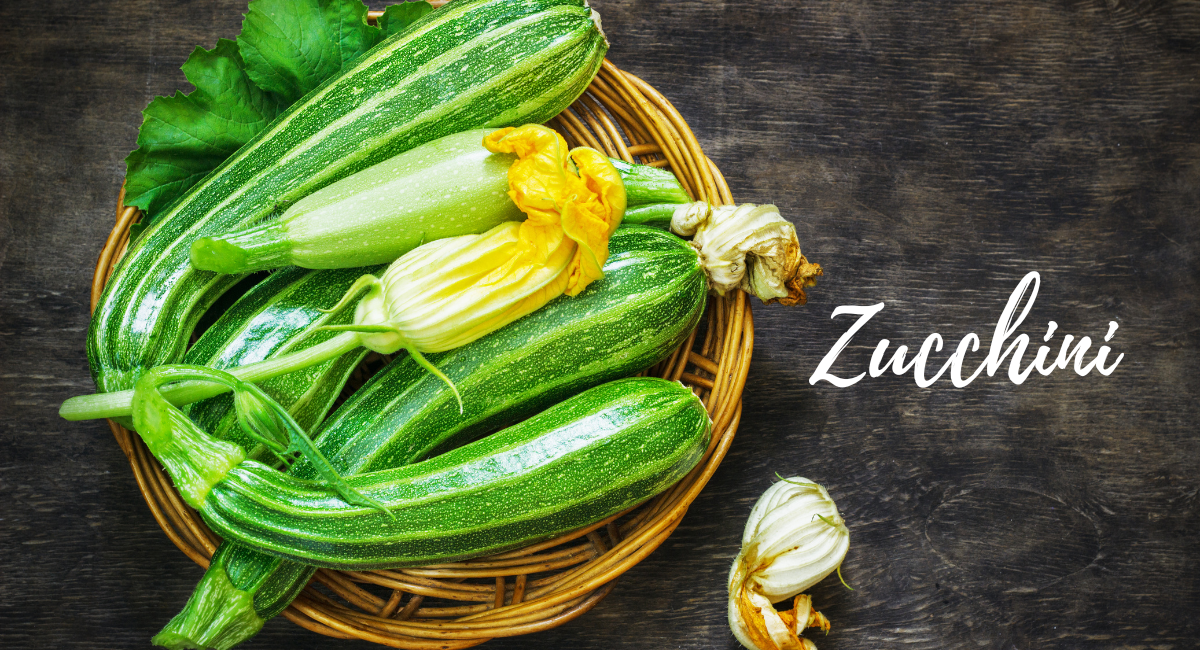Zucchini: Unveiling the Culinary Versatility and Nutritional Richness

Zucchini, often regarded as a culinary chameleon, is a vegetable that seamlessly blends into various dishes while offering an impressive nutritional profile.
Originating from the Americas, this green gem has made its way into kitchens worldwide, revered not only for its flavor but also for its health benefits. In this article, we will delve into the fascinating history of zucchini, explore its diverse varieties, and highlight its culinary applications and nutritional advantages.
A Historical Perspective
Zucchini, or Cucurbita pepo, is a member of the expansive cucurbit family, which encompasses pumpkins, cucumbers, and melons. This vegetable’s roots trace back to the Americas, where it was domesticated over 7,000 years ago. Indigenous peoples incorporated zucchini into their diets due to its versatility and nutritional value.
The vegetable embarked on a global journey following the discovery of the New World, eventually gaining popularity in Europe. By the 19th century, it had evolved into the zucchini we recognize today, particularly flourishing in Italy, where it was affectionately dubbed “zucchino,” meaning small squash.
Exploring Zucchini Varieties
Zucchini comes in various shapes, sizes, and colors, each offering a unique set of characteristics that cater to diverse culinary needs. Let’s dive into some of the most popular varieties:
Italian Zucchini
Italian zucchini is perhaps the most recognizable, with its dark green skin and robust nutritional content, including B vitamins and antioxidants. Its texture is ideal for grilling, roasting, and stuffing, making it a favorite in many kitchens.
Yellow Zucchini
With its vibrant hue, yellow zucchini mirrors the nutritional benefits of its green counterpart while adding a splash of color to dishes. Its mild flavor lends itself well to salads and visually appealing culinary presentations.
Round Zucchini
True to its name, the round zucchini is perfect for stuffing. Its shape allows for creative culinary endeavors, and it maintains its structure well during cooking, offering a good source of dietary fiber.
Romanesco Zucchini
Characterized by its distinct ridges and slightly sweeter taste, Romanesco zucchini is rich in vitamin A. Its firm texture and flavor are ideal for dishes requiring these qualities.
Lebanese Zucchini
Also known as Middle Eastern zucchini, this variety is notable for its shorter, wider shape and smooth light green skin. Its mild, slightly sweet flavor and tender texture make it versatile for sautéing, stuffing, and raw dishes. Nutritionally, it provides vitamin C and potassium while being low in calories.
Brazilian Girl Zucchini
Popular in Brazil, this variety is distinguished by its dark green skin with lighter stripes. It is uniform in size and shape, with firm flesh and a mild flavor, suitable for various culinary uses, from sautéed dishes to pickles and baked goods.
Paulista Zucchini
Essentially a younger Brazilian Girl zucchini, the Paulista variety is drier with lighter stripes. Its firm texture and mild flavor make it perfect for stews, baked goods, and even pie and cake doughs, contributing antioxidants and vitamins to a healthy diet.
Organic Zucchini
Grown without pesticides, organic zucchini tends to have a richer flavor and slightly higher levels of vitamins and minerals due to sustainable farming practices. This variety appeals to those seeking both health benefits and environmental responsibility.
Nutritional Benefits of Zucchini
Zucchini is a nutritional powerhouse, offering a wealth of essential nutrients while being low in calories. It is an excellent source of vitamin C, which boosts the immune system, and potassium, essential for heart health. Additionally, zucchini is rich in antioxidants such as lutein and zeaxanthin, which support eye health. Its high dietary fiber content aids digestion and promotes a feeling of fullness, making it an excellent choice for those aiming to maintain a healthy weight.
Culinary Applications and Adaptability
Zucchini’s adaptability in the kitchen is one of its most appealing features. Its mild flavor allows it to complement a wide array of ingredients, making it suitable for a variety of dishes. Zucchini can be grilled, roasted, sautéed, or used raw in salads. Its versatility extends to both savory and sweet creations, from spiralized zucchini noodles to zucchini bread and muffins.
Whether you are looking to add a nutritious boost to your meals or seeking a creative outlet for culinary experimentation, zucchini offers endless possibilities. It pairs well with flavors such as garlic, lemon, and basil, enhancing everything from light summer salads to hearty stews.
Conclusion
Zucchini is much more than a versatile kitchen ingredient; it is a treasure trove of nutrition and culinary potential. Its diverse varieties and health benefits make it an invaluable addition to diets around the world. As we explore the rich world of zucchini, from the classic Italian to the exotic Lebanese and beyond, we celebrate a vegetable that is both a culinary star and a health ally. Embrace the versatility and goodness of zucchini, and let it inspire your next culinary adventure, transforming your meals into vibrant, nutritious experiences.
